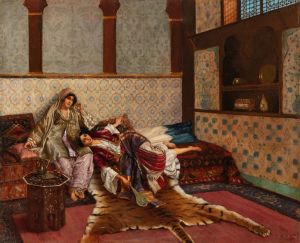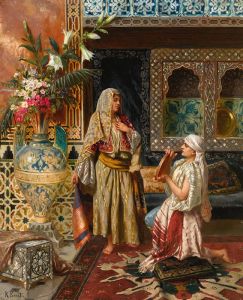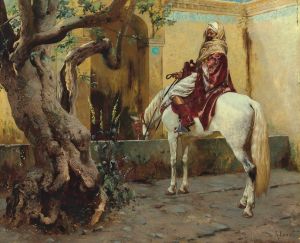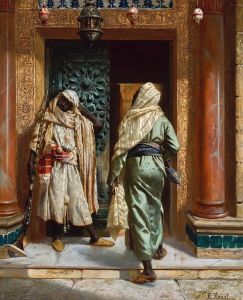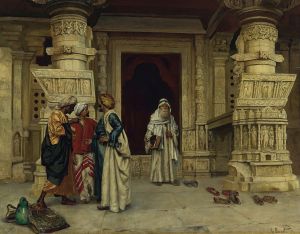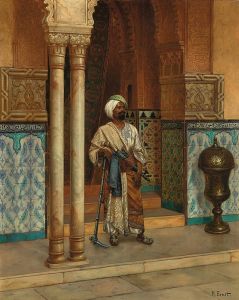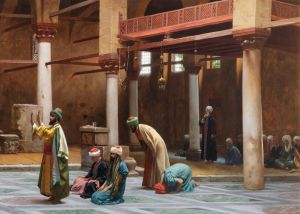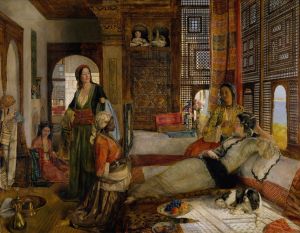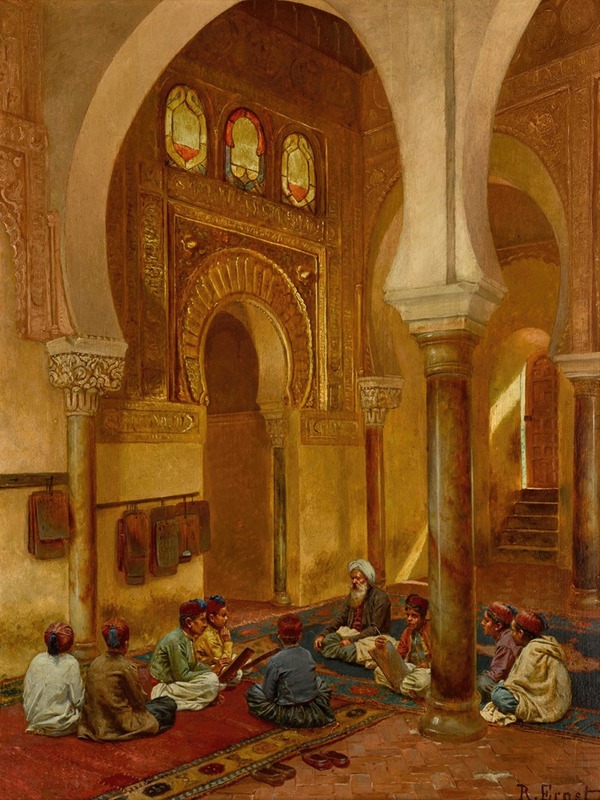
In the Madrasa
A hand-painted replica of Rudolf Ernst’s masterpiece In the Madrasa, meticulously crafted by professional artists to capture the true essence of the original. Each piece is created with museum-quality canvas and rare mineral pigments, carefully painted by experienced artists with delicate brushstrokes and rich, layered colors to perfectly recreate the texture of the original artwork. Unlike machine-printed reproductions, this hand-painted version brings the painting to life, infused with the artist’s emotions and skill in every stroke. Whether for personal collection or home decoration, it instantly elevates the artistic atmosphere of any space.
Rudolf Ernst's In the Madrasa is a painting created by the Austrian artist Rudolf Ernst (1854–1932), who is known for his Orientalist works. Ernst was part of the 19th-century Orientalist movement, which depicted scenes inspired by the cultures, architecture, and daily life of the Middle East, North Africa, and other regions perceived as "exotic" by European audiences of the time. His works often reflect a fascination with intricate details, vibrant colors, and a romanticized portrayal of these regions.
In the Madrasa depicts a serene interior scene of a madrasa, which is an Islamic educational institution. The painting showcases Ernst's meticulous attention to detail, particularly in the architectural elements, such as the ornate tilework, arches, and geometric patterns, which are characteristic of Islamic art and architecture. The scene likely includes figures engaged in study or contemplation, emphasizing the scholarly and spiritual atmosphere of the setting. Ernst's use of light and shadow enhances the depth and realism of the composition, while his careful rendering of textures, such as textiles and ceramics, adds to the visual richness of the work.
Rudolf Ernst's artistic style was heavily influenced by his travels and his exposure to Orientalist themes during his time in Paris, where he was part of the academic art scene. Although it is unclear whether Ernst visited the regions he depicted, his works often drew from a combination of imagination, studio props, and references to existing artworks or photographs. His paintings were popular among European collectors who admired the romanticized and idealized visions of the "Orient."
As with many Orientalist works, In the Madrasa reflects the 19th-century European perspective on non-European cultures, which often blended admiration with stereotypical and idealized portrayals. While the painting captures the beauty and intricacy of Islamic art and architecture, it is important to view it within the context of its time, recognizing both its artistic merits and the cultural assumptions that shaped its creation.
Specific details about the date of creation or the current location of In the Madrasa are not readily available. However, many of Ernst's works are held in private collections or occasionally appear in art auctions.






